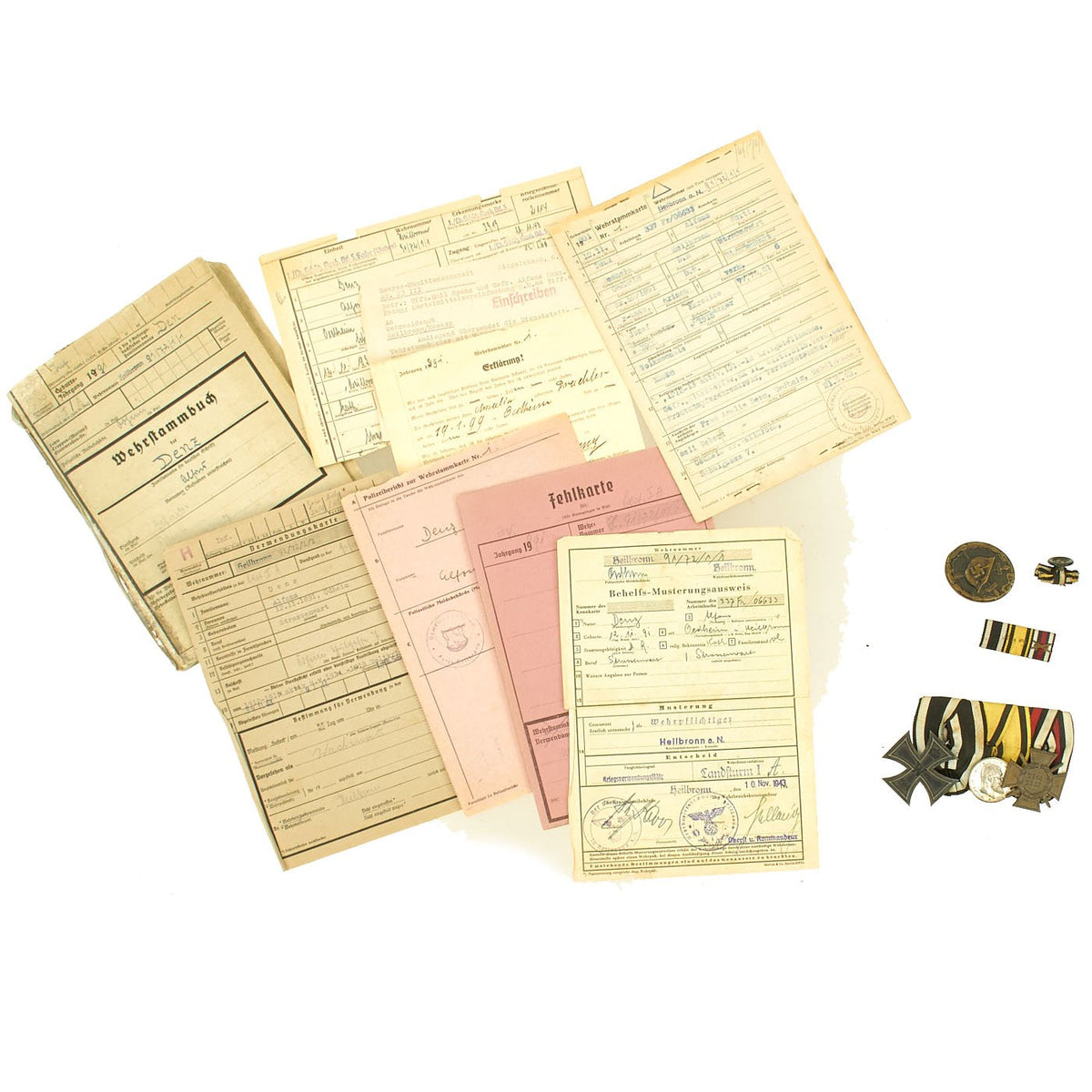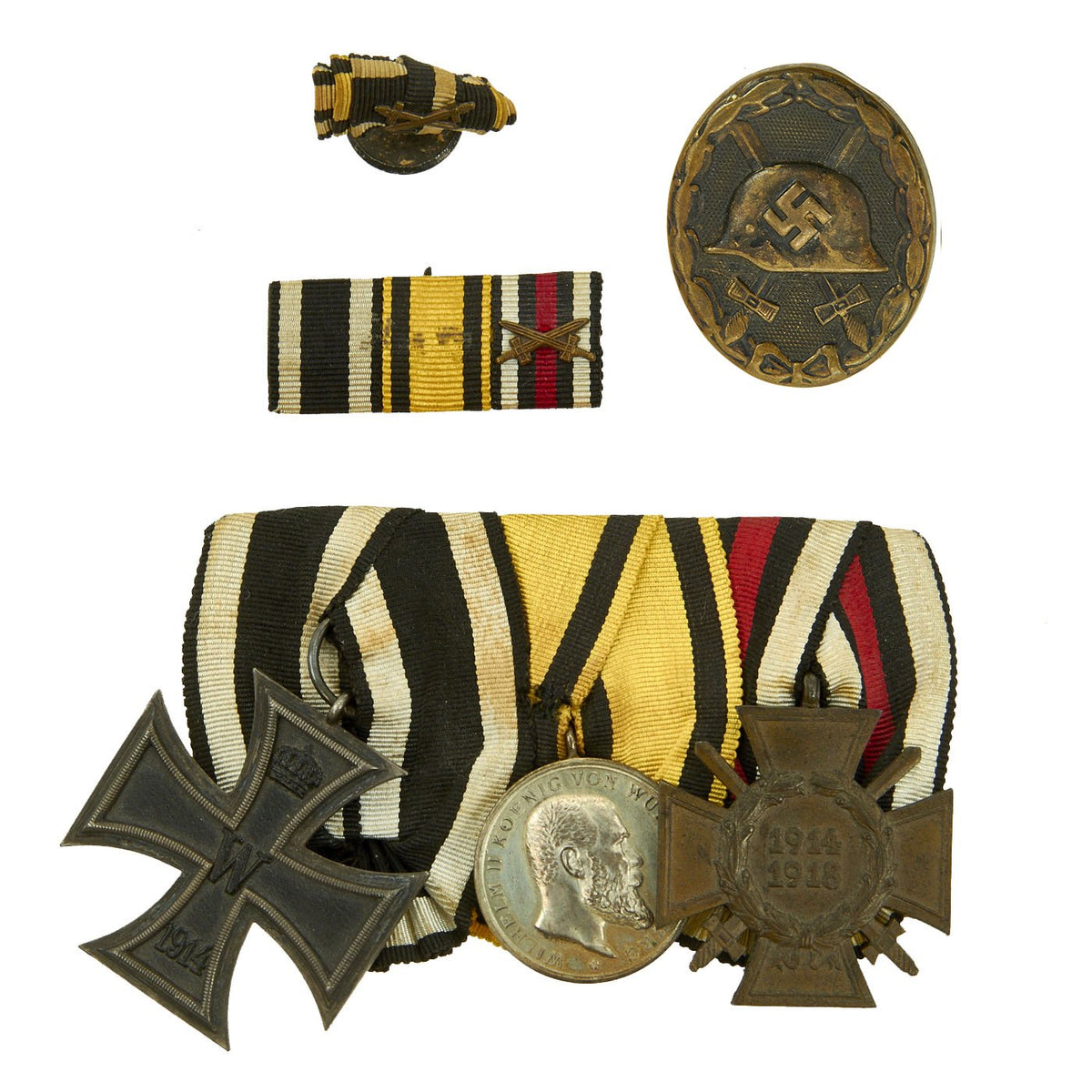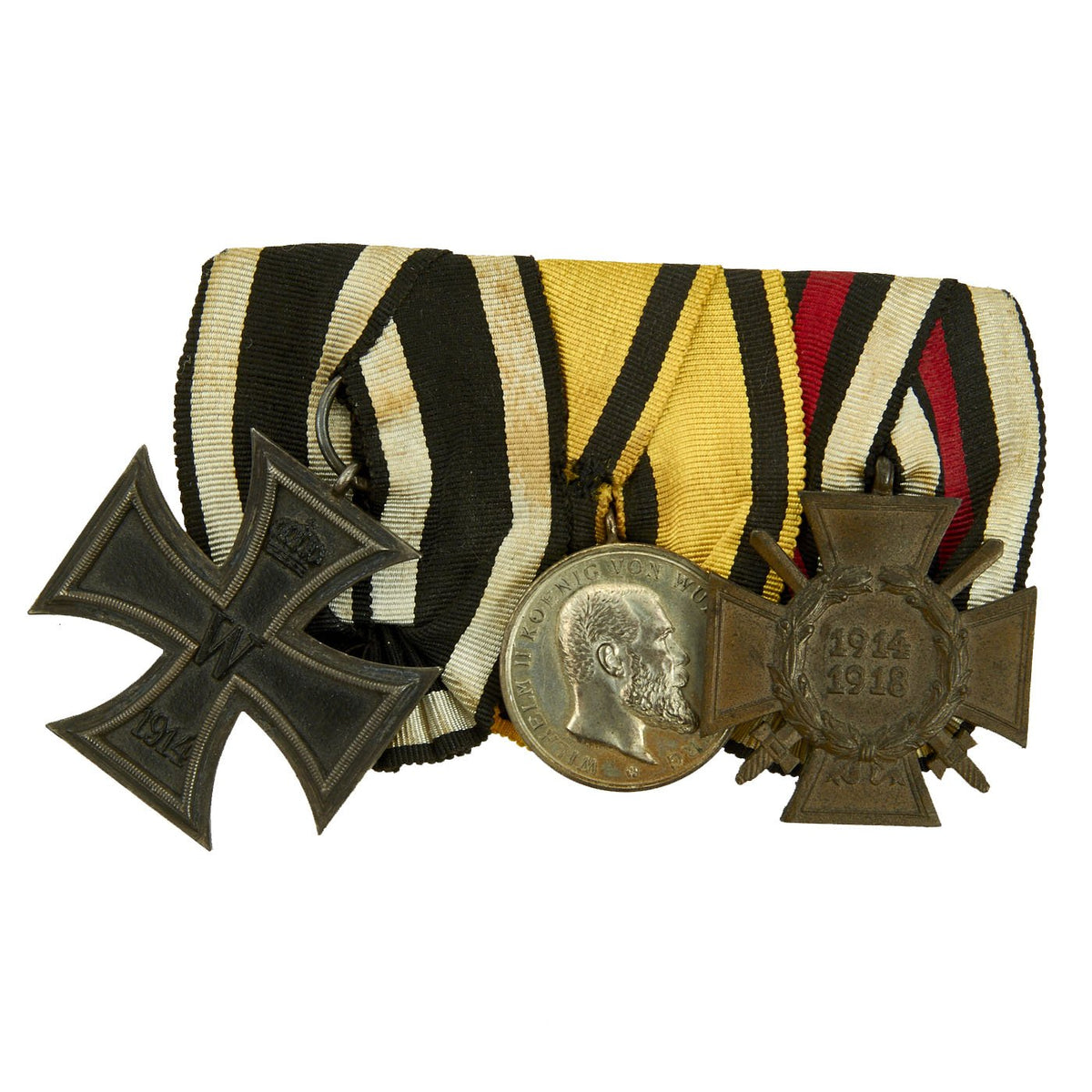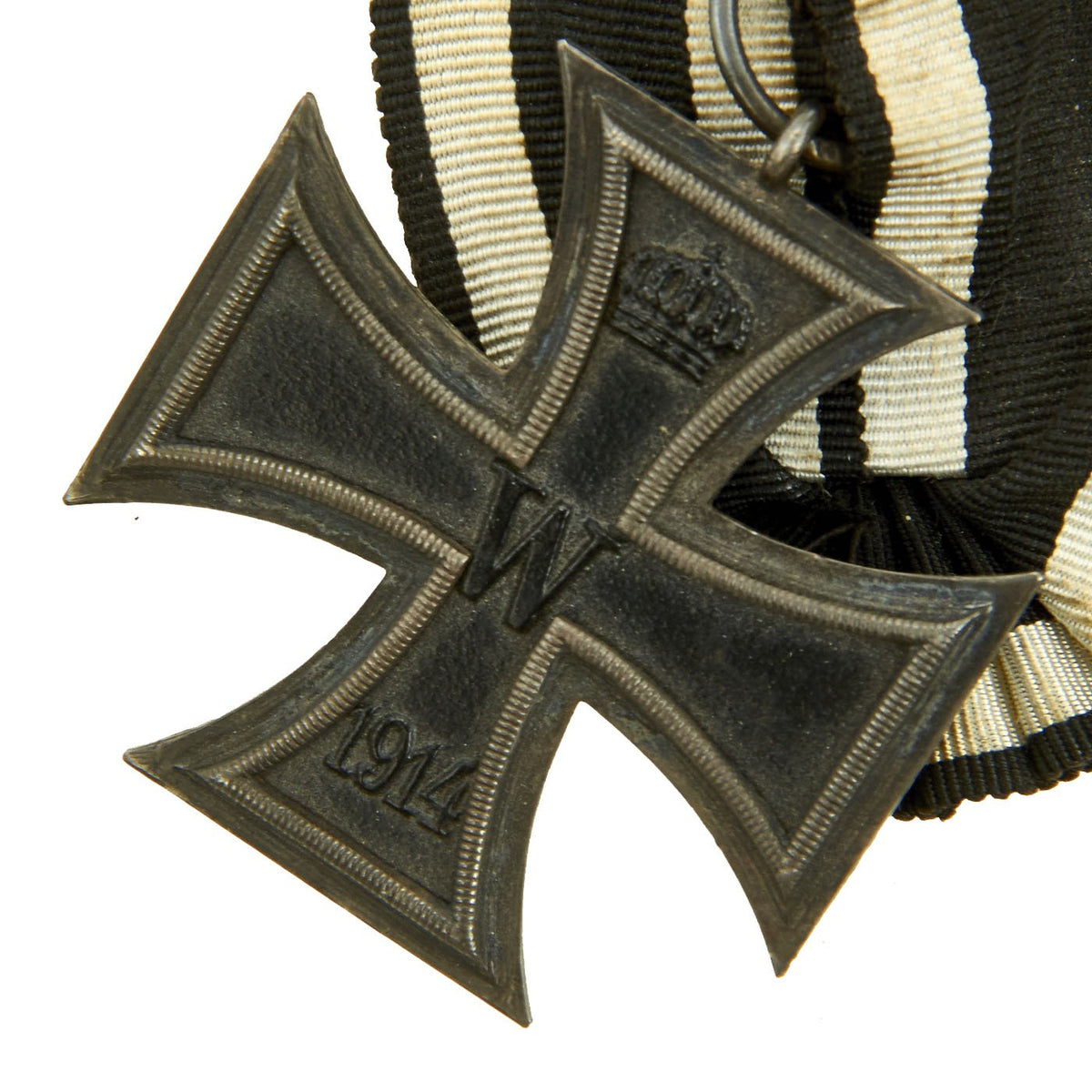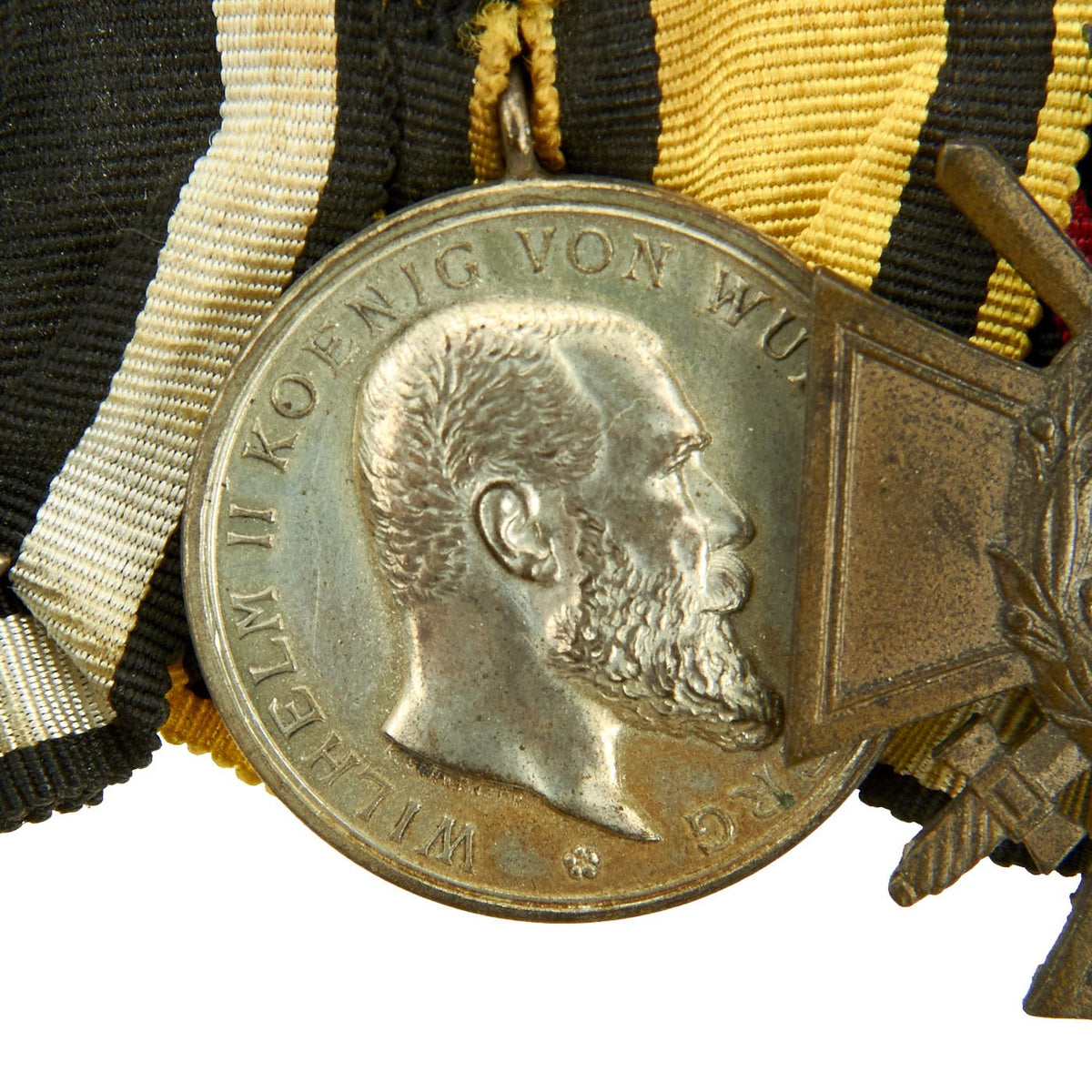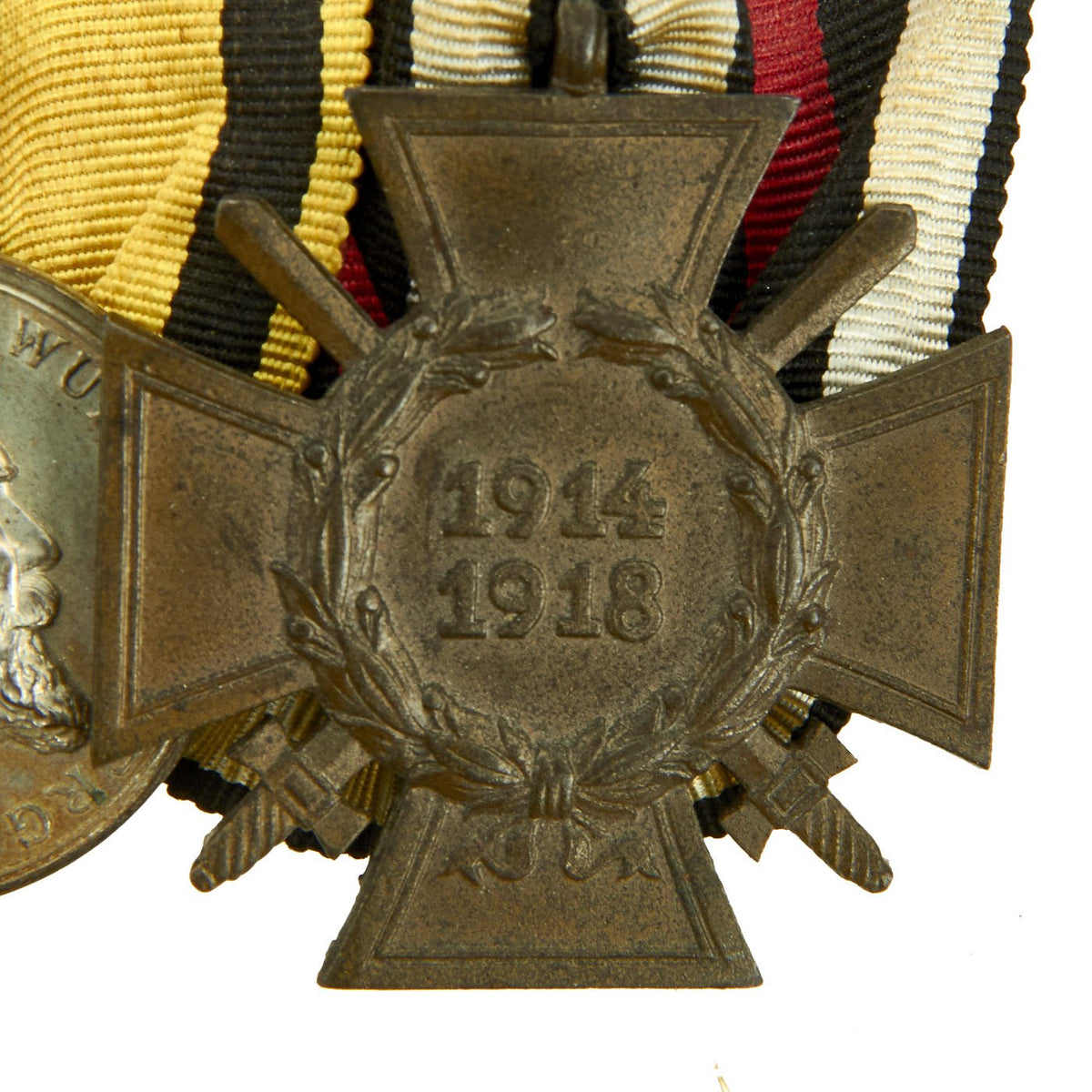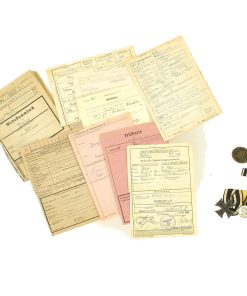Original German WWI – WWII Medal Bar & Document Grouping with EKII and Kingdom of Württemberg Medal Original Items
$ 395,00 $ 118,50
Original Item: One-of-a-kind. This is a very nice genuine medal bar grouping, owned by a German soldier who fought during both WWI and WWII. Included with this are numerous documents related to their service, as well as a WWII 3rd Class Wound Badge. The documents are named to Alfons Dens, who was born on 12.11.1891 in Ödheim, part of what was then the Kingdom of Württemberg.
He served during WWI, and must have acquitted himself well, having received two medals, and the later Weimar issue “Hindenburg” cross. He had these correctly mounted on a ribbon bar to display or wear. The colors on the ribbons are quite nice, so these were definitely kept out of the sun and safe for some time. Two of the medals are specific to the Kingdom of Württemberg, so it is very likely that the soldier was from that area.
The set of 3 medals are offered in very good condition, and are mounted on a metal backing board with pin and lined with red felt material on the back. The medals are the following, in correct display order:
- Imperial German WWI Iron Cross 1914 2nd Class Medal
- Württemberg Wilhelm II Military Merit Medal in Silver
- German WWI Honor Cross of the World War 1914/1918 (Hindenburg Cross) Medal
Additionally, there is a miniature ribbon bar for these medals, as well as a buttonhole mini ribbon bar for all three awards, which are stacked in medal ribbon order, with swords on top.The included WWII Wound badge in black is in good condition, though does show wear through to the brass base metal.
The included documents are definitely the most interesting part of the grouping, and present a great further research opportunity for someone who can read German. The documents include his Wehrpflichtiger (Conscription) notice, dated 1943, as well as his Wehrstammbuch (Military Register). Other documents and notices indicate he was part of an infantry training battalion. At an age of 51, one would not be conscripted into front line service in 1943, so most likely for additional training, they called up veterans who were still able bodied.However at the end of WWII, even the training battalion members were put into action, explaining the wound badge.
This really is a great display set, with loads of research potential. There are lots of markings and stamps, which really make a great display piece.
Below is an explanation of the awards in detail:
German WWI Prussian Iron Cross 2nd Class with Ribbon:
Established by Frederick William in 1813 for gallantry in action, the decoration was revived several times for later conflicts. The bulk of the issues are divided into 1st and 2nd class versions, but a rare and superior ‘Grand Cross’ was also awarded for successful field commanders. During WW1 the lower decoration was freely awarded with 5½ million second class types issued. Originally, the Iron Cross was an award of the Kingdom of Prussia, however given Prussia’s pre-eminent place in the German Empire formed in 1871, it became an award for all of Germany.
The basic design of the WW1 crosses is a central cross patee struck from iron and mounted in a silver frame which has a raised crenulated decorative border. The obverse of the cross bears the date 1914 under a crowned ‘W’ monogram. Reverse bears an oak leaf cluster with the date of the decoration’s institution, 1813 underneath – the crowned initials of Frederick William are in the top arm above the oak leaf cluster. Suspension for second-class types is by means of a ring, and frequently this ring bears a maker’s stamp.
Please examine the edge seam for authentication, which is not present on reproductions. Iron crosses were commonly constructed from an iron core sandwiched in a surrounding two part silver frame, normally the seam of these two silver parts is visible around the edge of the cross as is seen on this fine example.
Kingdom of Württemberg Wilhelm II Military Merit Medal in Silver
This is the standard military merit award for the Kingdom of Württemberg during the WWI era, known as the Militärverdienstmedaille in Silber. The individual German Kingdoms, Duchies, and states during WWI all had their own leaders and medals, which varied quite a bit in design. This medal features a front face with the head of King Wilhelm II of Württemberg facing right, circumscribed WILHELM II KOENIG VON WUERTTEMBERG. The rear face has a ring of laurels around the edge, with FÜR TAPFERKEIT UND TREUE (For bravery and loyalty) in the center. The medal was instituted in 1818 to be awarded for military merit. Wilhelm II became king on 6 October 1891 and the new version of the medal bearing his image was introduced on 26 June 1892. It was suppressed in 1918 when, along with all other German rulers, Wilhelm was deposed at the end of World War I
This example is in good shape, with a lot of the silvering remaining, with the usual oxidation. It is mounted on the correct Post-1914 yellow and black ribbon.
Hindenburg Cross with Crossed Swords (for combat):
The Honor Cross of the World War 1914/1918 (German: Das Ehrenkreuz des Weltkriegs 1914/1918), commonly, but incorrectly, known as the Hindenburg Cross was established by Field Marshal Paul von Hindenburg, President of the German Republic, by an order dated 13 July 1934, to commemorate the distinguished deeds of the German people during the First World War. This was Germany’s first official service medal for soldiers of Imperial Germany who had taken part in the war, and where they had since died it was also awarded to their surviving next-of-kin. Shortly after its issuance, the government of NSDAP Germany declared the award as the only official service decoration of the First World War and further forbid the continued wearing of German Free Corps awards on any military or paramilitary uniform of a state or NSDAP Party organization.
This example is marked on the back with O & B, which is unfortunately an unknown maker.
The Wound Badge (German: Verwundetenabzeichen) was a military decoration first promulgated by Wilhelm II, German Emperor on 3 March 1918, which was awarded to wounded or frostbitten soldiers of the Imperial German Army, during World War I. Between the world wars, it was awarded to members of the German armed forces who fought on the Nationalist side of the Spanish Civil War, 1938–39, and received combat related wounds. It was awarded to members in the Reichswehr, the Wehrmacht, SS and the auxiliary service organizations during the Second World War. After March 1943, due to the increasing number of Allied bombings, it was also awarded to wounded civilians in air raids. It was awarded when the wound was the result of enemy hostile action, with an exception being for frostbite.
The badge had three classes:
– Black (3rd class, representing Iron), for those wounded once or twice by hostile action (including air raids).
– Silver (2nd class) for being wounded three or four times.
– Gold (1st class, which could be awarded posthumously) for five or more times wounded.
The “progression” could be waived in the event of loss of a limb or eyesight; when such a severe wound occurred, the silver badge was awarded.
Badges were made of pressed steel, brass and zinc. All versions of the Wound Badge were worn on the lower left breast of the uniform or tunic. The badge was worn below all other awards on the left. It ranked lower than combat badges. There were 24 approved manufacturers of the Wound Badge. At first, the Wound Badge in Black was stamped from sheet brass, painted semi-matte black with a hollow reverse pin back attachment or of solid construction. From 1942, steel was used to make the badges. The Wound Badge in silver was made (before 1942) from silver-plated brass, and (after 1942) from lacquered zinc, and had a solid reverse with either a needle pin or a broad flat pin bar. The Wound Badge in Gold was a gilded version of the Wound Badge in Silver.
Fast Shipping with Professional Packaging
Thanks to our longstanding association with UPS FedEx DHL, and other major international carriers, we are able to provide a range of shipping options. Our warehouse staff is expertly trained and will wrap your products according to our exact and precise specifications. Prior to shipping, your goods will be thoroughly examined and securely secured. We ship to thousands clients each day across multiple countries. This shows how we're dedicated to be the largest retailer on the internet. Warehouses and distribution centres can be located throughout Europe as well as the USA.
Note: Orders with more than one item will be assigned a processing date depending on the item.
Before shipping before shipping, we'll conduct a thorough inspection of the items you have ordered. Today, the majority of orders will be delivered within 48 hours. The delivery time will be between 3-7 days.
Returns
The stock is dynamic and we cannot completely manage it because multiple stakeholders are involved, including our factory and warehouse. So the actual stock may alter at any time. It's possible that you may not receive your order once the order has been made.
Our policy is valid for a period of 30 days. If you don't receive the product within 30 days, we are not able to issue a refund or an exchange.
You can only return an item if it is unused and in the same state as the day you received it. You must have the item in its original packaging.
Related products
Uncategorized
Uncategorized
Uncategorized
Uncategorized
Uncategorized
Uncategorized
Australian WWII Owen MK1 Machine Carbine SMG Custom Fabricated Replica with Sling Original Items
Uncategorized
Uncategorized
Uncategorized
Uncategorized
Uncategorized
Uncategorized
Uncategorized
Uncategorized
Uncategorized
Uncategorized
Uncategorized
Uncategorized
Uncategorized
Uncategorized
